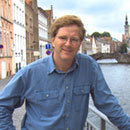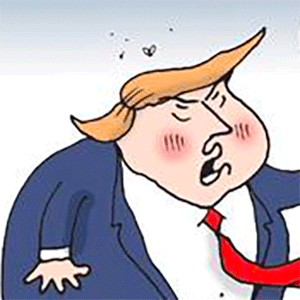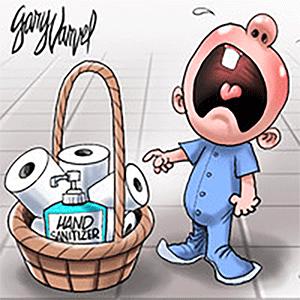Rick Steves’ Europe: Exquisite London: Victoria, Albert, snuff boxes, and afternoon tea
Squinting at the jeweled snuff box of Frederick the Great in London's Victoria and Albert Museum, it occurs to me that you could make a theme tour called "Exquisite London." It would feature the souvenirs and ego trips left over from London's gilded age of obscene privilege, plus a few ostentatious knick knacks from our own time.
If tracking “Exquisite London,” I’d start in the Victorian Age with the Great Exhibition of 1851. And the best place to do that is in the amazing museum established by the profit from that fair, London’s beloved Victoria and Albert Museum.
The Great Exhibition of 1851 celebrated the spirit and energy of London’s Victorian Age. Queen Victoria, with hubby Prince Albert at her royal side, ruled Britain through its 19th-century glory days (1837 to 1901). Bursting with unprecedented optimism, London threw this first great world’s fair. And while the pavilions of the fair are long gone, the V&A is in many ways a warehouse preserving its memory.
The halls of the vast V&A take you from Raphael cartoons of Renaissance Italy, to priceless vases of China’s Ming dynasty, to an intricate 16th-century Islamic carpet designed for the ancestral shrine of the ruler of Iran. The British Galleries show off the snooty best of England’s ultimate country homes and city mansions, including a lavish room from Norfolk House intended solely for the playing of music.
A highlight for me is the Gilbert Collection. Londoners Rosalinde and Arthur Gilbert – who spent their fortune amassing micromosaics, jeweled snuffboxes, and portrait miniatures – lived by the motto "not for us, but for everyone." Today, their collection is enjoyed by the public for free in a suite of V&A galleries.
The Gilbert Collection's micromosaics look like paintings at first. But peering through the magnifying glasses, you see a field of pinhead-sized glazed and semiprecious cobbles carefully placed to give shadow and texture. Many of the mosaics feature classic art themes – Venus, the three graces, the Madonna and Child. These were souvenirs that 18th-century English aristocrats brought home from their "Grand Tours" of the Continent.
Then you enter a room of brilliantly jeweled and gilded snuff boxes. The highlight of the collection is Frederick the Great’s set of six incredibly ornate snuff boxes – considered part of the crown jewels of Prussia.
The sniffing of powdered and scented snuff tobacco was an elaborate social ritual in the 18th century, and high-fashion aristocrats had a snuffbox for every occasion. Ideal for the big shot who has it all, diplomats gave them as gifts. The fanciest are so diamond-encrusted, they overexpose when photographed.
Across the street from the V&A is the towering Albert Memorial. Restored with three dazzling layers of gold leaf, it features Albert holding a book that people assume is the Bible. It's actually the catalog of the Great Exhibition of 1851, which Albert spearheaded. Victoria declared that the opening of the fair – which six million people attended – was the "happiest, proudest day of [her] life.”
If the finery of the V&A puts you in a consuming frame of mind, walk down the street to Harrods, London’s most venerable department store. Digital maps (via the Harrods app or scannable QR codes around the store) help you navigate Harrods’ 300+ departments and one million square feet of display space on seven floors, directing you to whatever you want: that $35,000 kid-sized yet drivable Ferrari...or maybe just a fancy snuff box.
To hit Harrods’ high points, start at the ground-floor food halls, with their Edwardian tiled walls, creative and exuberant displays, sales staff in period costumes, and tempting theme eateries.
On the fourth floor, hop and skip through toyland (finding the kid-sized luxury cars) to the Harrods Tea Rooms, which serves a fancy afternoon tea. For a splurge, you'll enjoy a three-tiered serving tray stacked with finger sandwiches, scones, and pastries and a big, steamy pot of tea while a pianist tickles the keys of a long, long Bösendorfer – one the world’s most expensive piano brands. Or, for a superb lunch on the relative cheap, I buy an over-the-top picnic from Harrods’ deli section and munch it across the street in Hyde Park’s Rose Garden.
Savoring my white asparagus, foie gras, and delightful tropical fruit plate to go, I mentally round up the most exquisite experiences in Europe: the Bernini statues in Rome’s Villa Borghese, Belgian chocolates in Bruges, the sumptuous Topkapı dagger in Istanbul, the slinky Alfons Mucha collection in Prague, and the pastel worth-the-ransom macarons of Paris’ finest cafés. Then, surrounded by Britain's bustling capital and a thousand plush roses, I marvel how big shots and little shots alike can enjoy the many treasures of London. When it comes to mixing the exquisite and the accessible, nothing tops London.
========
(Rick Steves (www.ricksteves.com) writes European guidebooks, hosts travel shows on public TV and radio, and organizes European tours. This column revisits some of Rick's favorite places over the past two decades. You can email Rick at rick@ricksteves.com and follow his blog on Facebook.)
©2023 Rick Steves. Distributed by Tribune Content Agency, LLC.
(c)2023 RICK STEVES DISTRIBUTED BY TRIBUNE MEDIA SERVICES, INC.














Comments